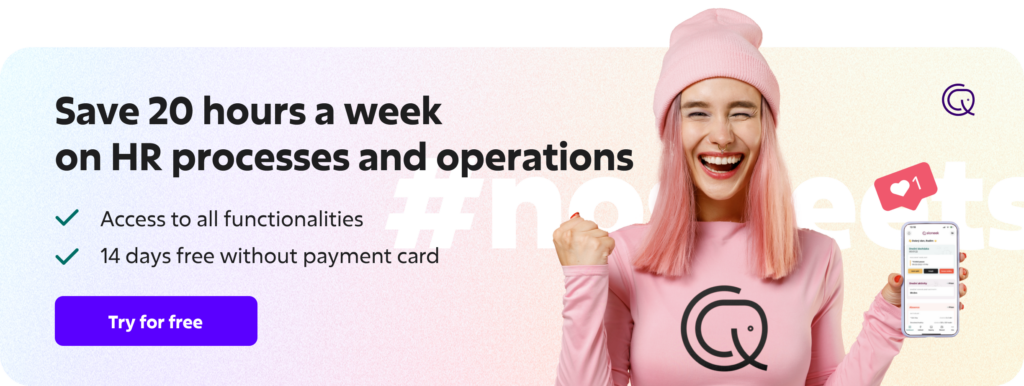Cultivating Success: Mastering the Employee Onboarding Process

Employee onboarding is a critical component of any successful organization’s HR strategy. A well-structured onboarding process not only sets the stage for a positive employee experience but also plays a pivotal role in employee retention, productivity, and overall company success.
Let’s take a look at what an effective onboarding process is. You will also explore the benefits of a comprehensive onboarding program, best practices, and key metrics and KPIs.
What is the Employee Onboarding Process?
The employee onboarding process is a meticulously designed series of steps aimed at seamlessly integrating new hires into an organization. It includes a range of activities, from essential documentation and training to fostering a sense of belonging within the company culture.
This process begins even before the employee’s first day with pre-boarding preparations, which may involve documentation, setting up equipment, and introducing them to company policies.
Once the new employee joins, orientation sessions provide essential information about their role and job responsibilities. However, it doesn’t stop here; the journey continues with ongoing training, development, and support to nurture their long-term success within the organization.
Why are Employee Onboarding Programs Important?
Employee onboarding programs are important for several compelling reasons:
1. First Impressions Matter
Onboarding is the new employee’s first direct interaction with the company after the hiring process.
A positive experience sets the tone for their entire tenure and can significantly impact their perception of the organization.
2. Productivity and Efficiency
According to a study by The Brandon Hall Group, businesses with a strong onboarding process improve productivity by over 70%.
Properly onboarded employees are more likely to become productive team members sooner. They receive the necessary training, tools, and information to excel in their roles, reducing the learning curve.
3. Employee Retention
Successful onboarding programs contribute to higher employee retention rates.
Around 69% of employees are more likely to retain at a company for at least three years if they experience effective onboarding.
4. Engagement and Job Satisfaction
Effective onboarding programs that introduce employees to the company values, culture, and mission help them feel engaged and aligned with the organization’s goals. This leads to increased job satisfaction and motivation.
5. Cost Savings
High employee turnover can be expensive due to recruitment and training costs. Effective onboarding can significantly reduce turnover rates (by 18%-43%), saving the company time and money.
Employee Onboarding Metrics & KPIs
Tracking employee onboarding metrics and key performance indicators (KPIs) is crucial for assessing the effectiveness of your onboarding process. Here are some essential KPIs to monitor:
Time-to-Productivity (TTP)
Measure how long it takes for new hires to become fully productive in their roles. A shorter TTP indicates an efficient onboarding process.
Employee Retention Rate
Calculate the percentage of new hires who remain with the company after a specified period (e.g., 6 months or 1 year). High retention rates signal successful onboarding and alignment with company culture.
Onboarding Completion Rate
Monitor the percentage of new employees who complete all required onboarding tasks and training modules. A high completion rate ensures that critical information is effectively conveyed.
Manager and Employee Satisfaction Surveys
Regularly collect feedback from both new hires and their managers regarding the onboarding process. Their input can reveal areas for improvement and highlight successful practices.
Employee Engagement Scores
Assess the level of engagement among newly onboarded employees. Engaged employees are more likely to contribute positively to the organization’s success.
Time-to-Fill Open Positions
Evaluate how long it takes to fill vacant positions. A shorter time-to-fill indicates an efficient onboarding process, as it reduces the need for extended recruiting cycles.
Best Practices to Improve Your Employee Onboarding Process
Here are a few proven strategies to help you optimize your employee onboarding process:
1. Automate your Onboarding with Smart Software
Streamline the onboarding process by leveraging intelligent software solutions. Automating repetitive tasks like paperwork, document management, and training materials not only reduces administrative burden but also ensures consistency and compliance.
Smart employee onboarding software can also provide a personalized employee onboarding experience, tailoring content to individual needs.
2. Design Employee Onboarding Flow Chart
Create a visual roadmap of the onboarding journey with an employee onboarding workflow chart. This clear and concise tool helps both HR professionals and new hires understand the sequence of steps, deadlines, and key responsibilities.
The flow chart eliminates confusion, ensures tasks are completed in the right order, and enhances communication throughout the process.
3. Assign an Onboarding Buddy
Pair new hires with a seasoned employee who can serve as a mentor or buddy. This mentorship fosters a sense of belonging, provides a go-to person for questions, and accelerates the acclimatization process.
It’s also an excellent way to transfer institutional knowledge.
4. Regular Feedback and Check-Ins
Schedule periodic check-ins during the first few months to gather feedback and assess the new employee’s progress. Encourage open and constructive conversations, addressing any concerns promptly.
This two-way communication helps identify and rectify issues early, ensuring a positive onboarding experience.
Final Thoughts
Mastering the employee onboarding process is essential for organizations striving to build a cohesive, productive, and engaged workforce. From the initial stages of pre-boarding to ongoing development and feedback, a well-designed onboarding program is the cornerstone of success. Sloneek’s tailored HR solutions can help you craft a thoughtful onboarding experience that aligns with your organization’s values.
By consistently refining your employee onboarding process, you not only enhance productivity and retention but also cultivate a thriving company culture. Ultimately, this investment in your employees pays dividends in the form of job satisfaction, commitment, and long-term success for both your organization and its valuable team members.
Remember, the journey of optimizing your employee onboarding process is ongoing, and the rewards are well worth the effort.
Frequently Asked Questions
How can employee onboarding automation benefit my organization?
Employee onboarding automation streamlines administrative tasks, reducing the need for manual processes. It ensures that new hires have a consistent and organized experience, freeing up HR professionals to focus on more critical business tasks.
What should be included in an effective onboarding checklist?
An effective onboarding checklist should encompass tasks such as paperwork completion, introduction to company policies, role-specific training, and orientation to the company culture. It should be adaptable for both in-person and remote onboarding.
How can I transition from manual processes to automated remote onboarding?
Transitioning from manual processes to automated remote onboarding involves selecting the right software or tools to assist in automation. Additionally, it’s essential to design a remote onboarding process that aligns with your organization’s goals and values while leveraging automation to enhance efficiency and consistency.
How can I maintain a consistent onboarding experience for both in-office and remote employees?
To ensure consistency in onboarding, develop a standardized process that incorporates both in-office and remote elements. Leverage technology to provide remote employees with the same training and resources as their in-office counterparts.




